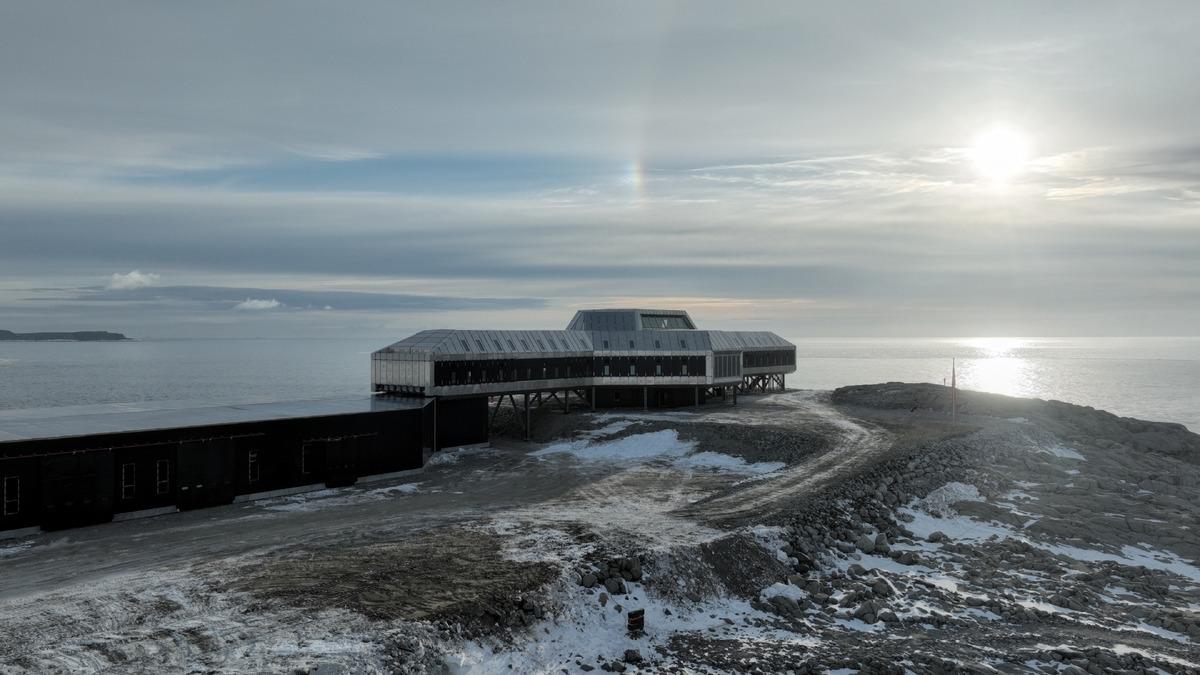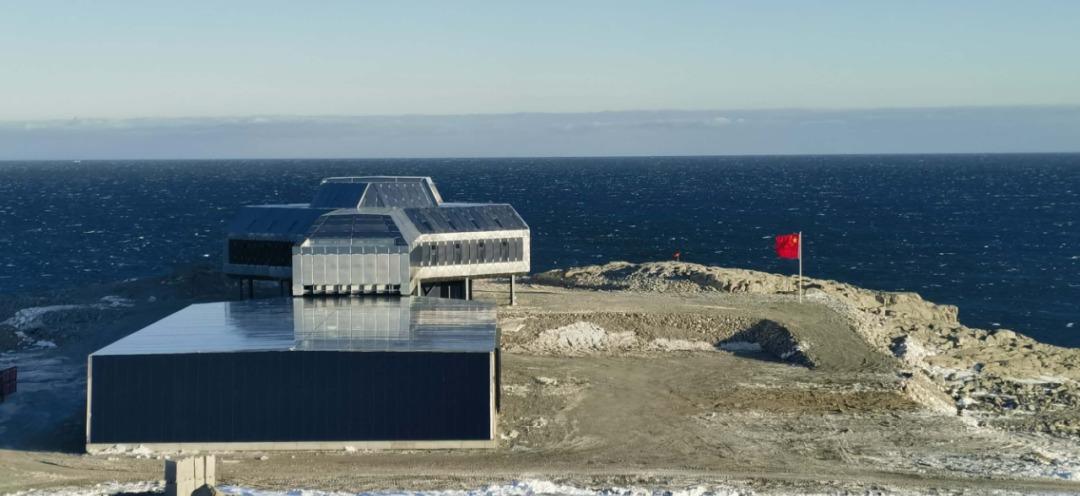 A drone photo taken on Feb 6, 2024 shows the view of China's Qinling Station in Antarctica. China's Qinling Station in Antarctica, the country's fifth research station in the continent, started operation on Wednesday. (PHOTO / XINHUA)
A drone photo taken on Feb 6, 2024 shows the view of China's Qinling Station in Antarctica. China's Qinling Station in Antarctica, the country's fifth research station in the continent, started operation on Wednesday. (PHOTO / XINHUA)
China's fifth scientific outpost in Antarctica, Qinling Station, opened on Wednesday morning.
The research facility, on Inexpressible Island in Terra Nova Bay, can accommodate 80 people in summertime and 30 in wintertime, according to the Polar Research Institute of China, which was in charge its construction.
READ MORE: Xi hails completion, operation of Qinling Station in Antarctica
The station has an area of 5,244 square meters and an external shape resembling the Southern Cross constellation, a unique design to honor Zheng He, a legendary Ming Dynasty (1368-1644) admiral, mariner and diplomat, it said.
All of its large components were built in China with inner hardware already mounted and then transported to Inexpressible Island for assembly.
Engineers used lightweight, high-strength materials on the station, making it able to resist temperatures as low as -6 C and the corrosive environment on the island.
Construction began in December and was undertaken by members on China's 40th Antarctic expedition, which set out from Shanghai in early November and arrived in Antarctica later that month.
The other four Chinese research stations in Antarctica are Changcheng, Zhongshan, Taishan and Kunlun.
The new station is the third Chinese research base in Antarctica able to operate all year, joining Changcheng and Zhongshan, which were built in the late 1980s.
 (PHOTO / SINA WEIBO ACCOUNT OF PEOPLE'S DAILY)
(PHOTO / SINA WEIBO ACCOUNT OF PEOPLE'S DAILY)
 (PHOTO / SINA WEIBO ACCOUNT OF PEOPLE'S DAILY)
(PHOTO / SINA WEIBO ACCOUNT OF PEOPLE'S DAILY)
 (PHOTO / SINA WEIBO ACCOUNT OF PEOPLE'S DAILY)
(PHOTO / SINA WEIBO ACCOUNT OF PEOPLE'S DAILY)
ALSO READ: China polar driller obtains Antarctic bedrock sample
Kunlun and Taishan stations are currently operated during the summertime.
China's commitment to scientific research and the peaceful development of the polar regions has seen it conduct 40 expeditions to Antarctica and 13 to the Arctic, obtaining a great deal of scientific data and many samples.


